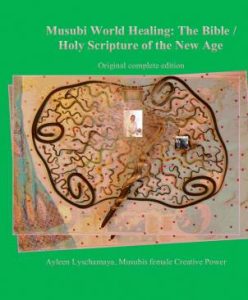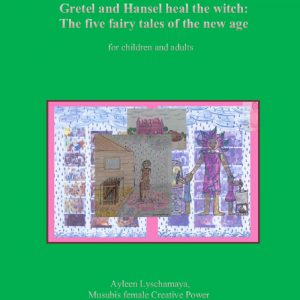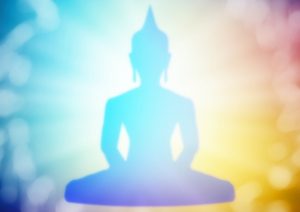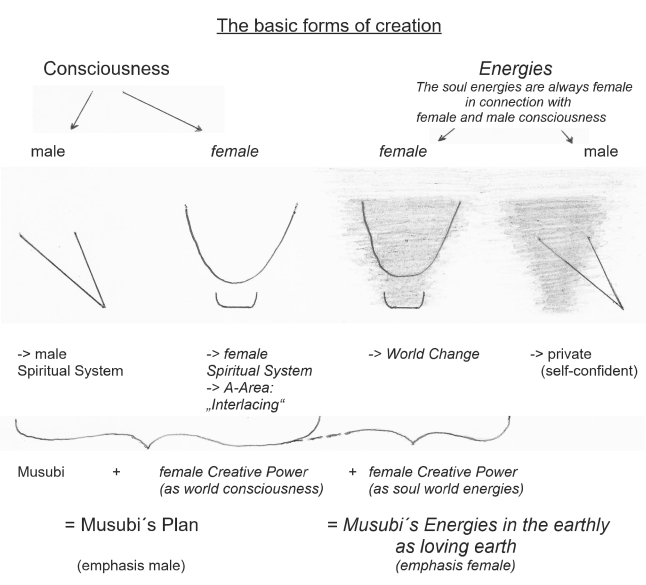 Table of Contents
Table of Contents
- The biggest mistake of Buddhism – lack of love
- Buddhism does not know compassion either
- Why is lay Buddhism harmful, too?
- Hostile to life Buddhism
- Buddhism as the devil to Musubi?
- Buddhism: the deceptive package for the West
- Buddhism’s protective assertion against criticism
- Right and wrong about death and rebirth
- Consciousness and World Religions
- Who was Buddha?
The biggest mistake of Buddhism – lack of love
Buddhism, representative of the old age, is based on a lack of love. This lack of love is difficult to explain when Buddhism teaches about loving kindness, compassion, joy and serenity, and love towards others as well as towards oneself. It is also true that suffering is on the structural layer, which can be transcended into transcendence as conventional enlightenment. Conventional enlightenment in its complete form is a state of consciousness of deep peace, great harmony and all-embracing security.
Why then can Buddhism nevertheless be based on a lack of love?
Love is felt through its flow of energy in consciousness. Buddhism also assumes this when it describes love as an active feeling. This means that love is directed towards something and is felt more intensive, the stronger the energy flow is.
In compassion and loving kindness, love is directed towards other people. Likewise, in Buddhism, joy comes from sharing joy with others or from giving joy. Love itself is described as a pure feeling that is given to other living beings completely selflessly. It is also directed towards other people.
The main forms of love in Buddhism are therefore directed towards others with their energy flow. If one identifies only with this content of consciousness, one can perceive oneself as filled with love.
Serenity, in turn, comes from identification with the conventional state of enlightenment, that is, with transcendence.
Buddhism, however, has difficulty with self-love. It tends to be derived indirectly or from the “acceptance of what is”. Sometimes the difficulty with self-love is also seen as caused through the concept of “self”.
But in fact, self-love does not exist in Buddhism, as it is missed throughout the old age. It is precisely on this lack of self-love that the old age’s lack of love is based. The old age differs in lack of love from the new age with fulfillment of love.
How can I be so sure that Buddhism does not know self-love?
Buddhism does not know self-love, because otherwise it would never teach the leaving of suffering and pain, but their healing. Love does not leave, but heals ‒ especially one’s own suffering and pain.
While Buddhism teaches serenity in transcendence and the flow of love to others, the higher level of consciousness of the new age results from the flow of love into one’s own inner family(AL) with karmic and body as ego.
What does this mean for Buddhists?
Heal your inner woman as a prerequisite for the göttlich-irdischen Liebesfluss (divine-earthly love-flow) in your consciousness. Instead of paying distant attention to your feelings, connect with them ‒ while being open to universal love ‒ and thereby heal them.
With the present new age, this development of consciousness will no longer be as difficult for you as you may still believe, for the path has already been prepared. With my journey to India in 2018, I have already laid the foundation for this göttlich-irdischen Liebesfluss (divine-earthly love-flow) worldwide.
 That is why my travel report “Healing the world through consciousness development for India” together with the five fairy tales of the new age “Gretel and Hansel heal the witch” result in the Holy Scripture of Am-Ziel-Erleuchtung© “Musubi World Healing“. This Holy Scripture is aimed at those, who are already am-Ziel-erleuchtet© [final-enlightened(AL)], as a creation guide for the göttlich-irdischen Liebesfluss (divine-earthly love-flow), so that you will not understand much of it. Nevertheless, the India travelogue can show you the shortcomings of Buddhism that made it necessary to dissolve Buddhism. Moreover, this means a facilitated chance for you to grow beyond your previous level of consciousness.
That is why my travel report “Healing the world through consciousness development for India” together with the five fairy tales of the new age “Gretel and Hansel heal the witch” result in the Holy Scripture of Am-Ziel-Erleuchtung© “Musubi World Healing“. This Holy Scripture is aimed at those, who are already am-Ziel-erleuchtet© [final-enlightened(AL)], as a creation guide for the göttlich-irdischen Liebesfluss (divine-earthly love-flow), so that you will not understand much of it. Nevertheless, the India travelogue can show you the shortcomings of Buddhism that made it necessary to dissolve Buddhism. Moreover, this means a facilitated chance for you to grow beyond your previous level of consciousness.
 Berlin 2018, Ayleen Lyschamaya
Berlin 2018, Ayleen Lyschamaya
Buddhism does not know compassion either
Already with love, the lack of love in Buddhism is not immediately obvious. You have to look very closely, but then it is at least recognizable at all. The lack of compassion, on the other hand, only becomes apparent when one has full transcendent consciousness. After all, compassion is a central theme of Buddhism and relates to other living beings.
Enlightened Buddhists regularly cannot feel compassion, because they have suppressed the consciousness-parts for compassion. The emptiness describes the experience of oneness from consciousness. The soul, however, feels the universal whole personally, for example, as Musubi. That is, Buddhism does not teach identification with the soul, which is love and feels compassion. Therefore, compassion does not arise from the teaching of Buddhism. In this respect, compassion is felt by enlightened Buddhists only exceptionally when they feel their soul from the beginning, despite Buddhism.
The soul feels love and compassion. The compassion is led into the earthly through the inner child and through the inner woman. However, both parts of consciousness together with their feelings are suppressed in Buddhism. Therefore, from the Buddhist teaching, compassion is not felt, but from the head, compassion is decided. This may be a good decision in principle, but it does not help the necessary healing of feelings.
Berlin, October 11, 2023, Ayleen Lyschamaya
Why is lay Buddhism harmful, too?
Lay Buddhism refers to Buddhist teaching and practice when it is not practiced by nuns and monks. Especially in the West, lay Buddhism is the predominant form of Buddhism. But also in the Asian region, many people see in the Buddha above all someone helpful to whom they can turn. In addition, there are moral precepts in Buddhism, such as not to kill, not to steal, not to lie, and not to take intoxicants. There is nothing wrong with these rules of life.
Buddhism is harmful to consciousness when the practice is to alter consciousness. In particular, the Buddhist instruction to control feelings is harmful. Instead of healing hurt feelings, they are controlled and repressed. This repression of feelings has the effect of repressing the consciousness-parts, which are feeling, along with them. This harms the consciousness of the serious practitioner.
Those, who merely follow the moral precepts and ask Buddha for help, do not change their consciousness through doing so. However, even if they do not harm their consciousness in this respect, they still harm themselves through the energies.
A teaching that is harmful to consciousness also has correspondingly harmful energies. Any control and repression blocks the flow of love energy. Control and repression require, for their effectiveness, energy that opposes the natural flow of love. Such energy, directed against the flow of love, is the opposite of love, namely hostile.
Those, who orient themselves to Buddhism, automatically orient themselves to hostility. And this harms all Buddhists, regardless of the extent of their practice. Therefore, Buddhism is not only harmful to the consciousness of serious practitioners. It is also wrong for all other people, because they connect with hostile energy.
In this respect, there is only a graduated degree of harmfulness for Buddhism. For all Buddhists, the energies are harmful. For those, who practice seriously, there is an additional harm to consciousness. Thus, the more intensively someone gets involved in Buddhism, the more she or he goes in the wrong direction.
Berlin, October 13, 2023, Ayleen Lyschamaya
Hostile to life Buddhism
Buddhism emerged from Hinduism. The religious texts in Hinduism are the “Vedas”. The Vedas are revelations from wise people. How does Buddhism position itself to its predecessors, the Vedas?
The Vedas teach an individual soul and distinguish it from the world soul. Buddhists, however, turn to Buddha as the founder of their religion and to bodhisattvas as further enlightened beings. The existence of the divine is denied in Buddhism and instead only emptiness is taught.
Buddhism does not experience the world soul as a soul perception of the most high, but only in the perception out of the consciousness as emptiness. Buddhism reduces the whole one-sidedly to the perception out of the consciousness, because it does not know the soul any more.
Where has the soul gone in the consciousness of Buddhism? The soul is appropriated by karma, and behind it by the karmic dominance system. Instead of the soul being reborn with its karmic experiences stored in consciousness, everything is reduced to karma. Accordingly, Buddhism erroneously teaches that karma must be dissolved in order to leave the cycle of rebirths. In fact, however, the soul determines the rebirths.
Buddhism teaches as enlightenment an awakened mind without ego. In its view, the true spiritual nature is emptiness. That is, there is only emptiness and nothing else.
Buddhism has thus reduced the wisdom of the Vedas of Hinduism, its predecessor religion, to only emptiness. The emptiness is the primordial ground in everything. That is, Buddhism recognizes only the primordial ground in everything, but not the manifold forms that are life. Something more hostile to life than Buddhism is not conceivable.
But in fact, life is a gift that wants to be created.
Berlin, October 14, 2023, Ayleen Lyschamaya
Buddhism as the devil to Musubi?
In some religions, the opponent of God is called the devil. Buddhism itself knows two devilish opponents. On the one hand, it is Mara, the principle of death and disaster. On the other hand, the Buddhist monk Devadatta, a cousin and brother-in-law of the historical Buddha, is depicted as devilish in legends. Disagreements with the Buddha at that time led to a split in the Buddha’s young community.
To what extent is Buddhism, for its part, the antithesis of Musubi? In fact, it is in all fundamental statements, so that one can call it downright the antipode to Musubi. Buddhism twists especially the following elementary contents:
In the first place, Buddhism denies Musubi existence. Musubi is the guidance of the world in personal form and at the same time, perceived from the consciousness, the Buddhist emptiness. But Buddhism separates the Musubi essence-immanent emptiness and splits both to an either-or. Through unilaterally recognizing only emptiness, Buddhism becomes the devil against Musubi’s personal guidance.
As the meaning of life, Musubi has intended for the souls to create a loving earth. Buddhism, however, teaches exactly the opposite, namely to leave a suffering earth. In addition, Buddhism denies the soul its existence, because it has entangled it in the karmic. Furthermore, Buddhism does not teach healing, but rather the control of emotions.
Thus, Buddhism is the devil to Musubi; not in the sense of evil or with evil intent, but as an antagonist. Buddhism exaggerates itself to be the antagonist to Musubi’s existence, the meaning of life, the love of the soul and the healing of suffering.
My task is to restore Musubi’s leadership through exposing and ending Buddhism. No one is forced to abandon Buddhism, but why would anyone want to deliberately harm oneself?
Berlin, October 14, 2023, Ayleen Lyschamaya
Buddhism: the deceptive package for the West
The West usually thinks of Buddhism as a peaceful religion full of compassion and with the goal of enlightenment. The Dalai Lama preaches love, peace and non-violence and was honored with the Nobel Peace Prize in 1989. But, is this image of Buddhism really true?
First of all, Buddhism is internally torn and contradictory with regard to its own teachings. Thus, there are not only emptiness, but also deities in Buddhism, for example, the protective deity Shugden. The Dalai Lama worshipped this protective deity for a long time, too, but then forbade it, which led to a split in his Buddhist community. The conflicts escalated to the point of three murdered monks.
However, the Dalai Lama still uses state oracles. The question then arises to whom these oracles are actually addressed. If the oracle is a person as a medium, the deity behind it is questioned. And again, it is not about the emptiness, but Buddhism turns to a deity. Thus, it can be stated that Buddhism itself also finds its teaching lacking without guidance and orientation to a deity.
Intoxicants are forbidden in Buddhism. In Thailand, Buddhism is the predominant religion with about 93% of the population and many monks. However, the use of drugs and alcohol to the point of police chases has damaged the reputation of Buddhist monks as an accumulation of such scandals. A comprehensive reform of the Buddhist monastic orders is called for.
The old Tibet of the 1950s, in turn, was transfigured by the Dalai Lama into a cliché of a poor but deeply religious and therefore happy Tibet. He claimed, “The continuing influence of Buddhism resulted in a society of peace and harmony. We enjoyed freedom and contentment.” In fact, however, Tibet was a strictly hierarchical society with serfdom. There were draconian punishments up to and including physical mutilation. A common punishment in old Tibet was eye gouging. As the Tibetan monk police were particularly feared at that time, one can explain it quite with karma that the monks suffer now in turn under the Chinese.[1]
Also, Buddhists are by no means without exception gentle and non-violent people. They neither shy away from brutal riots with beating and murdering nor from destroying mosques.[2]
Buddhism is also not spared from the taboo subject of sexual abuse. Sexualized violence in Buddhist communities has been covered up in some cases for decades. Accusations of abuse against Buddhist leaders are not new, too, for example against a close, meanwhile dead confidant of the Dalai Lama. Sogyal Lakar was one of the most successful Buddhist teachers in the Western world and author of the world bestseller “The Tibetan Book of Living and Dying”. For decades he had dismissed the accusations of women as baseless allegations of individuals. Only after he was heavily incriminated by eight former students, did he resign as a spiritual teacher.[3]
The 87-year-old Dalai Lama himself, amid the laughter of those present, caused an uproar with his request to a small boy to “suck my tongue”. Even though there may be the greeting form of sticking out one’s tongue in Tibet, this is still something completely different from sucking one’s tongue after already a kiss on the mouth. To ignore the multiple physical signals of discomfort of the little boy and to dismiss them afterwards as “playful teasing” is no excuse.
With these examples, I am not interested in measuring Buddhism by the behavior of its representatives. What is important to me is merely to correct the unrealistic, positive cliché of Buddhism. The real failure of Buddhism lies in its false teaching as such.
Berlin, October 16, 2023, Ayleen Lyschamaya
Buddhism’s protective assertion against criticism
On the surface, Buddhism is open to criticism and even calls on people not to believe anything, but to question everything and to build on personal experience. At first, this sounds very self-confident, self-assured and good.
However, the way today’s Buddhism deals with criticism actually looks completely different. As soon as criticism of Buddhism is raised, it is immediately said that the West has not understood Buddhism correctly. Thus, any criticism is blocked and at the same time Buddhism is exaggerated into incomprehensible perfection.
To be distinguished, however, are the cultural differences as belonging to the earthly and the truth of consciousness behind them. People, who are still searching, may be affected by cultural difficulties of understanding. But from the complete transcendental consciousness, such a comprehensive understanding is given that neither cultural differences nor translation influences play a role.
For example, it does not matter at all, whether dukkha is translated as suffering or is meant more comprehensively, when the Buddhist path out of dukkha is wrong as such. Leaving dukkha as a stepping out leads in the wrong direction. No matter whether as dukkha or translated as suffering, it is not about leaving into emptiness at all. Instead, it is about the healing of suffering, or in terms of dukkha, about fulfillment in dukkha.
Also with the term nirvana, meticulous care is taken to differentiate between the extinction of the person and the extinction of neediness. What looks like a significant difference from the earthly point of view, is completely indifferent from the complete transcendental consciousness. It is not about the extinction of anything at all, but about the fulfillment through Liebesflussverbindung (love-flow-connection) in consciousness.
The Buddhist experience of consciousness behind all cultural differences is as emptiness only a section of the complete transcendental consciousness. From this only partial experience of the complete transcendental consciousness, conclusions were drawn that are wrong. That is why Buddhism is cross-culturally harmful to consciousness.
Berlin, October 17, 2023, Ayleen Lyschamaya
Right and wrong about death and rebirth
 The Buddhist belief in rebirth is correct. In reality, however, rebirth is not a belief at all, but a fact. One knows it when, on the one hand, one is in the realm energetically and in terms of consciousness, and, on the other hand, one remembers previous lives.
The Buddhist belief in rebirth is correct. In reality, however, rebirth is not a belief at all, but a fact. One knows it when, on the one hand, one is in the realm energetically and in terms of consciousness, and, on the other hand, one remembers previous lives.
But everything else that Buddhism teaches about death and rebirth is wrong. It is such wrong that it is best to forget it altogether. By denying the soul and drawing wrong conclusions for consciousness from its limited partial experience, Buddhism tries to explain death and rebirth karmically – and this is false.
Humans are reborn only as humans, or on other planets as human-like living beings. They are never reborn as animals, gods, demons, etc., because it does not correspond to their consciousness. No matter how good or bad their karma is, human beings remain human beings, who, however, encounter their karma.
Equally wrong is the Buddhist assumption that death is karmically determined. In this respect, the differentiation as karmic life span, merit and strength of life does not matter either, because life span does not depend on karma at all. Instead, the natural lifespan is determined by the soul already before birth and is co-decided in life by the feminine.
Buddhism teaches that the mind leaves the body and is reborn in the next body. The mind has a very wide range of meanings in Buddhism, because it always has to be used when Buddhism is otherwise stuck. In fact, the mind is the soul reduced of its subtle feelings. It is the soul that is reborn. It is not included in the Buddhist teaching, only because Buddhism has reduced very much of the complete transcendent perception.
I perceive my soul as follows: The soul is a subtle, light, delicate, somewhat soft energy that is not quite sharply defined and contains a hint of love that becomes other stronger positive feelings, depending on what I create with the soul. With other people, souls, who are afraid of the coarse earthly, often hold on to me energetically. I then feel this very tenderly emotionally like the embrace as a mother of a fearful child. (Note: As a divine aspect a soul cannot be hurt, but related to the earthly it can have all feelings, so also fear).
The Buddha has experienced his soul without its subtle love only as mind. Possibly he has also not experienced the mind, but only postulated it in the contexts, in which it is not possible to get along without soul, or just as a substitute mind.
With regard to death, the Buddha just had made the experience of coming out of the karmic, and could not perceive more. Therefore, he mistakenly got stuck in explaining death and rebirth in purely karmic terms. However, leaving the karmic structural layer as enlightenment or death is actually only the first step of a five-step process of transformation.
This complete five-step transformation process of death and rebirth can be accomplished with leaving the body as death, or also without leaving the body as new incarnation within the life. I myself have personally experienced this living rebirth twice in this life, once as Musubis female creative power and then also once again starting from the soul. In addition, I have accompanied several of my disciples in their living death and rebirth.
These living deaths and rebirths had been necessary, because we had already completed Musubi’s plan and our soul plans before the end of our lives. Therefore, we reincarnated ourselves alive through death and rebirth.
Step 1: The structural layer with all its entanglements is completely left. Thereby, one recognizes as a life review the red thread in this life together with its karmic connections from previous lives. If as death, the body dies. In a living process of transformation, physical adjustments take place.
Step 2: After death, the karmic past is usually reworked for about a year (the time differences are great). This is roughly equivalent to “psychotherapy”. During this phase, the deceased should not be disturbed if possible. For example, for ancestor contacts this approximate year is to be waited for first. Living, the karmic past is also reworked.
Step 3: The new soul plan for the next life is determined together with Musubi. New soul appointments are also made for this.
Step 4: Accompanied by positive images for the new life, the new soul plan is imprinted.

Step 5: Next, there is the birth with higher soul age. This includes, for example, stronger earthly personality structures and more karmic experiences. The center of emphasis positioning in consciousness is new and the personal energies are changed.
Thus, you see, absolutely nobody needs to be afraid of death. Nobody will burn in hell. However, nobody will get away with evil deeds either. Everything finds its compensation over the lives not only through karma, but must be cleared up completely on all four awareness layers and in relation to Musubi. Musubi helps people to do this.
Berlin, October 18, 2023, Ayleen Lyschamaya
Consciousness and World Religions
Why are world religions an important topic? Because they influence the world view, shape culture and have an impact on human consciousness. At the same time, the collective consciousness of human history is expressed in the world religions.
The world religions have in the order of their emergence a correspondence in the overall social energy and consciousness. According to the universal laws of creation, the world religions shift their respective emphasis from soul-divine to earthly. One after the other the world religions illustrate the aberrations in the human consciousness.
Hinduism with its many deities reflects the diversity of the soul-divine layer of awareness. However, at that time in human history, people are already no longer identified with their own soul-divine layer of awareness. Therefore, they already worship the deities as counterparts. That is, Hinduism shows the consciousness maldevelopment of being separated from the transcendence.
Judaism as a down-to-earth community displaces as patriarchy the previous goddess. In fact, however, the female is responsible for the spiritual connection and the male for the earthly concretization. In Judaism, therefore, the layers of awareness are reversed when a patriarchy is responsible for a male god.
To distinguish from this twist of consciousness is that Musubi is linguistically “he”. The reason for this is that Musubi creates the earth from the männlichen Spirituellen System (male Spiritual System). From his nature of being, however, he is completely outside of our imagination of masculine, feminine and neuter.
Buddhism teaches enlightenment as oneness with the whole and thus the undoing of creation. It turns against all earthly contents of consciousness together with the earthly in itself as well as against the connection to the earthly. That means, Buddhism destroys the whole human consciousness in a life-hostile way.
Christianity has the peculiarity that it does not represent the teaching of Jesus, but uses Jesus for its own teaching. This own Christian teaching appropriated with Jesus as “died for us” the power over the feelings of guilt. For the collective consciousness it means that with Christianity the feelings of guilt are in the foreground.
Islam consists mainly of the Islamic faith and the fulfillment of duties. It is a religion especially related to action. At the time of the emergence of Islam, human consciousness was already broken, so that nothing else was added to it.
The modern “religion” in many, especially western, countries is science. Science allows only the mind in consciousness as considered rational. In fact, however, the mind is not rational at all at present, but taken over by the karmic dominance system. Thus, the current collective consciousness consists predominantly of karmic power-domination.
Berlin, October 19, 2023, Ayleen Lyschamaya
Who was Buddha?
 From the traditions of Buddha it can be concluded that he was in the männlichen Spirituellen System (male Spiritual System). In this he identified with his divine consciousness part, presumably extended into the greater whole. He recognized the masculine karmic, but did not integrate it, instead reinforcing this divine-earthly blockage through his teaching. While Buddha taught the leaving of the karmic cycle and the control of feelings, it is exactly the other way round. It is to create from Divine to earthly and the healing of feelings is important. Thus, his teaching is wrong and Buddhism had to be dissolved.
From the traditions of Buddha it can be concluded that he was in the männlichen Spirituellen System (male Spiritual System). In this he identified with his divine consciousness part, presumably extended into the greater whole. He recognized the masculine karmic, but did not integrate it, instead reinforcing this divine-earthly blockage through his teaching. While Buddha taught the leaving of the karmic cycle and the control of feelings, it is exactly the other way round. It is to create from Divine to earthly and the healing of feelings is important. Thus, his teaching is wrong and Buddhism had to be dissolved.
I myself am Musubis female Creative Power from its absolute origin and thereby heal the world. For this purpose, I changed the energetic basis of the world to the weiblichen Spirituellen System (female Spiritual System) at Christmas 2020. From this, the masculine is healed, too, with gradual transformation of the old false patterns such as Buddhism. The old patterns are merely still a temporary clinging to the familiar, without any further basis. The existence of the old patterns is only maintained for a while through this clinging. Those, who wish to support the healing of the masculine through the weibliche Spirituelle System (feminine Spiritual System), can already immediately connect to the new basis.
Since the end of 2022 we are in Musubi’s energies. This means that in addition to the transformation of consciousness, the world energies are now also changed to female. As a result, the automatic adjustment to the new feminine world base is taking place at an accelerated rate for all living beings. This requires letting go of the old, especially of the false teachings of Buddhism.

Berlin, October 10, 2023, Ayleen Lyschamaya
Further to the species of the new age, the Holy Scripture “Musubi World Healing“, the conventional gurus or the end of Christianity.
What changes does the world need? See the international magazine “new consciousness”.

[1] „Verklärt, verkitscht – Hollywood feiert den Dalai Lama“ von John Goetz und Jochen Graebert mit Bezug auf „Panorama“: https://daserste.ndr.de/panorama/archiv/1997/Verklaert-verkitscht-Hollywood-feiert-Dalai-Lama,erste6852.html
[2] „Der Dalai Lama ist kein Unschuldsengel“ in „Stern“, 10.4.2008: https://www.stern.de/politik/ausland/tibet-konflikt-der-dalai-lama-ist-kein-unschuldsengel-3081714.html
[3] „Zutiefst verstörend“ von Annette Zoch, 11.4.2023: https://www.sueddeutsche.de/politik/dalai-lama-zunge-eklat-missbrauch-kritik-1.5792950

![New Age of the Am-Ziel-Erleuchtung© [Final-Enlightenment(AL)]](https://new-age-enlightenment.com/wp-content/uploads/2018/03/new-age-enlightenment-spiritual-master-ayleen.jpg)